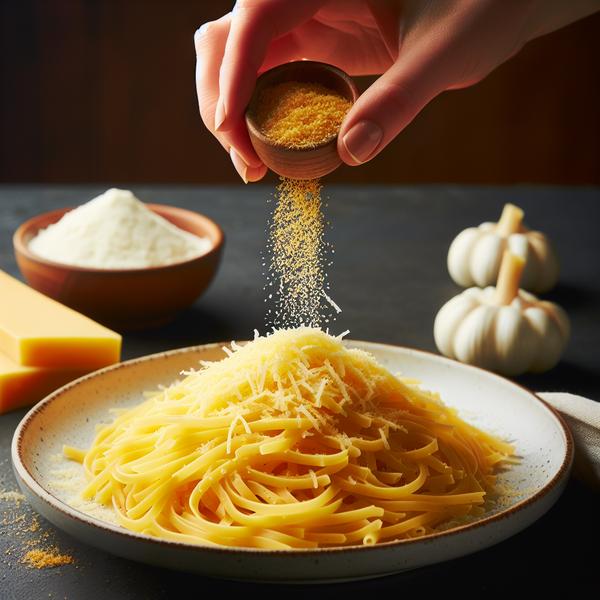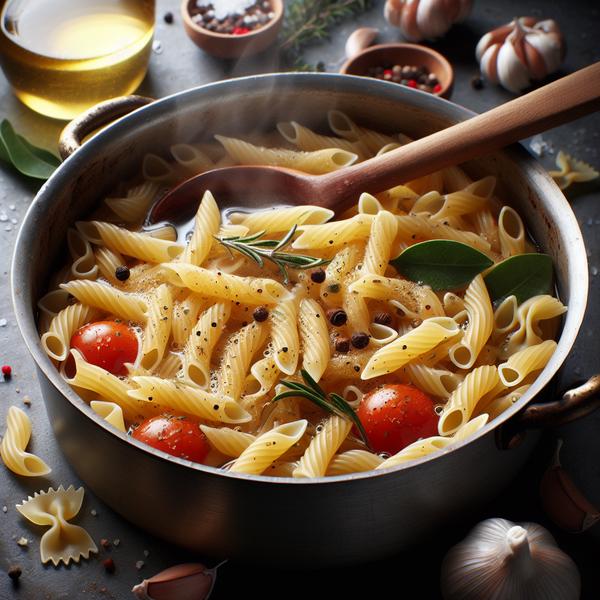How to Prevent Cheese From Clumping in Pasta (For Good)

Want to prevent that frustrating cheese clumping in your perfect pasta dish?
Tired of your creamy dreams being shattered by a gloopy mess? 😟
I feel your pain, my friend.
You pour your heart and soul into creating a delectable pasta dish, only to have it ruined by clumpy cheese.
But fear not, because today I'm going to share with you some tips and tricks to ensure that your pasta stays smooth and cheesy, just the way it should be.
So, let's dive in and put an end to those cheese clumping nightmares!
Tips for Preventing Cheese Clumping in Cacio E Pepe
To avoid cheese clumping in your Cacio E Pepe pasta sauce, here's what you can do:
- Gradually whisk the cheese into the sauce while it's on low heat. This breaks down clumps and helps it melt evenly.
- Make sure there's liquid in the pot - heavy cream, melted butter, seasoned pasta water, or beaten eggs all work. This maintains a smooth texture and prevents clumping.
- Grate the cheese finely and keep the pieces consistent in size. Thick grating increases surface area and can cause more clumping.
- Add the cheese to the sauce little by little, while stirring constantly. This ensures even melting and distribution of flavors.
- Slowly add the sauce while continuously stirring. Doing this prevents clumps and guarantees a smooth consistency.
- Whenever you're melting cheese, always include some liquid. Without it, larger pieces of cheese may not melt uniformly.
- Don't just sprinkle grated cheese over dry pasta. Instead, melt it into the sauce for better melting and distribution.
Follow these tips, and you'll steer clear of cheese clumps, enjoying a deliciously smooth Cacio E Pepe pasta dish. 😊
Main points I'll expand upon further down this article:
- Experiment with different water temperatures to achieve perfectly cooked pasta.
- Hot liquids like pasta water, heavy cream, and melted butter help distribute melted cheese evenly.
- Add butter to enhance the creaminess of your Cacio E Pepe.
- Patience is key to achieving a mouthwatering, irresistibly delicious dish.
And now, let's explore the delicious world of Cacio E Pepe cheese choices and flavor combinations!
Exploring Flavorful Combinations of Hard Cheeses for Cacio E Pepe Pasta
When making Cacio E Pepe pasta, you can try mixing up different hard cheeses like pecorino, parmesan, and grana padano.
Each cheese brings its own distinct flavors to the dish, allowing you to discover your personal flavor preference.
For grating the cheese, it's recommended to use either parmesan or pecorino, as they enhance the cheese's ability to bind together when added to the pasta.

To achieve the ideal texture and taste without any unnecessary elements, go for parmesan without additives such as corn starch.
So get cooking and embark on a cheesy adventure with Cacio E Pepe!
And if you're feeling curious about expanding your culinary skills, I highly recommend checking out my article, where I dive deep into different uses, substitutes, and where to purchase a pastry cutter.
Trust me, you won't want to miss the valuable insights I share in All About the Pastry Cutter.
Cooking the Pasta for Cacio E Pepe
Enhance the flavor with seasoned pasta water
Cooking pasta can be a breeze, my friend.
But if you want to take your pasta game to the next level, why not try something different?
Instead of boiling your pasta in plain old water, how about using some seasoned pasta water?
Trust me, it makes all the difference in the world!
Experiment with temperatures for perfectly cooked pasta
Now, let me tell you a little secret.
The temperature plays a significant role in cooking pasta for Cacio E Pepe.
The optimal temperature for pasta water varies depending on who you ask.
Some swear by 160 degrees Fahrenheit (71 degrees Celsius), while others believe 140 degrees Fahrenheit (60 degrees Celsius) is the magic number.
So, here's what I suggest:
Try both temperatures and see which one gives you that incredible al dente texture that will make your taste buds do a happy dance!

It's all about experimentation, my friend.
Achieve the perfect texture for ultimate enjoyment
Imagine this:
A dish of Cacio E Pepe that's creamy, flavorful, and absolutely indulgent.
But oh no, the pasta is clumpy and overcooked!
We certainly don't want that tragedy to happen to you.
That's why you must cook your pasta at the perfect temperature.
By doing so, you can achieve that sublime al dente texture that sets this dish apart. Trust me, it's pasta perfection, my friend!
Don't hesitate to get experimental in the kitchen and find that sweet spot of pasta water temperature.
Your taste buds will genuinely thank you, I promise.
And now, let me share with you some additional tips and techniques to elevate your Cacio E Pepe even further!
Elevating the Flavors of Cacio E Pepe

To make the perfect Cacio E Pepe, here's how to take it up a notch and make it even tastier:
- Sprinkle freshly ground black pepper at different times as you make the sauce. It keeps the flavor balanced, not overpowering.
- Use various hot liquids like pasta water, heavy cream, melted butter, or beaten eggs. They give the sauce a creamy texture and spread the cheese evenly.
- Want to really elevate your Cacio E Pepe? Add some butter. Mix it in and patiently let it melt, coating every strand of pasta with its richness.
- Don't forget the cheese - it's the pièce de résistance. Go for high-quality Pecorino Romano cheese and grate it yourself for an intense burst of flavor.
- Throughout the cooking process, keep tasting and adjusting the seasoning. This helps you find the perfect balance between cheese, pepper, and other ingredients.
Follow these techniques, and you'll create a Cacio E Pepe bursting with flavors that will have your taste buds begging for more. 😋
And that's all for today folks.
If you're up for more of my useful content, these articles are a good bet: What Is a Knob of Butter, Jelly Setting Time, How to Cool Down a Curry, What Is the Best Oil for Stir Fry, and Ultimate Guide to Zero Waste Grocery Stores
Until next time,
-Bianca Rossi